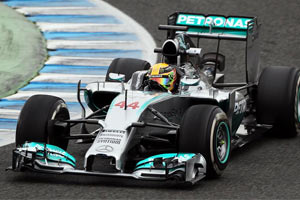l4mbch0ps wrote:It's also possible that other teams had anticipated required higher levels of efficiency re: the exhaust tuning to maintain turbo velocity. The split scroll Mercedes solution has shortened the tubing enough to potentially render the spaghetti manifolds obsolete perhaps?
Well yes and no. From a heat loss point of view the log is superior. From a flow point of view the tubular is much much more better.
So there is the balance. It seems for the 2014 regulations it is better to retain heat in the manifold at the expense of some high rpm flow. Mercedes played this very smartly as:
1. The engines will never see 15,000rpm even though that is the design limit. So the advantage of a tubular exhaust is lessened.
2.
These turbo's do not need to be sensitive to impulse flow, because the the MGU-H is there to accelerate the turbo.
3. Cooler under body temperatures. You have to turn down the horsepower if you cooling systems are overheated. Having the log manifold gives you a cooler under body temperature so even though theoretical horsepower is lower, you don't have to turn down your engine as much.
4. Smaller side pods. the small space taken up by the log manifold means smaller side pods and less drag on the straights. So it is feels like your engine has more power.
From a horsepower point of view the tubular wins, but as a package in 2014 the log manifold is very attractive. In real life situations even for street cars a log manifold is good up to 400hp. So imagine that a Formula 1 spec log manifold must have a higher limit? Not to mention the Formula 1 turbines are quite free flowing already. The higher back pressure from a log manifold might not be that much more.





